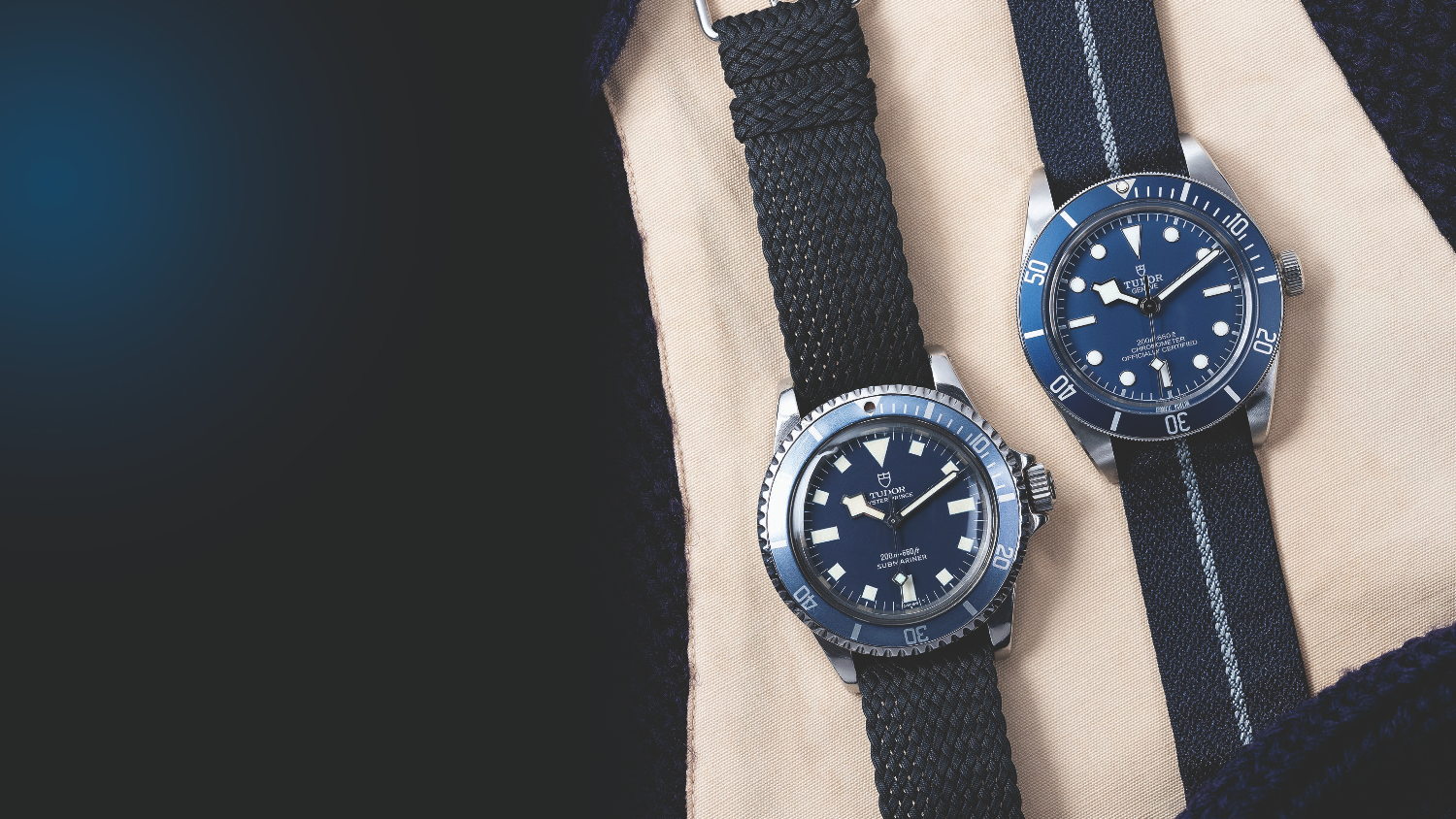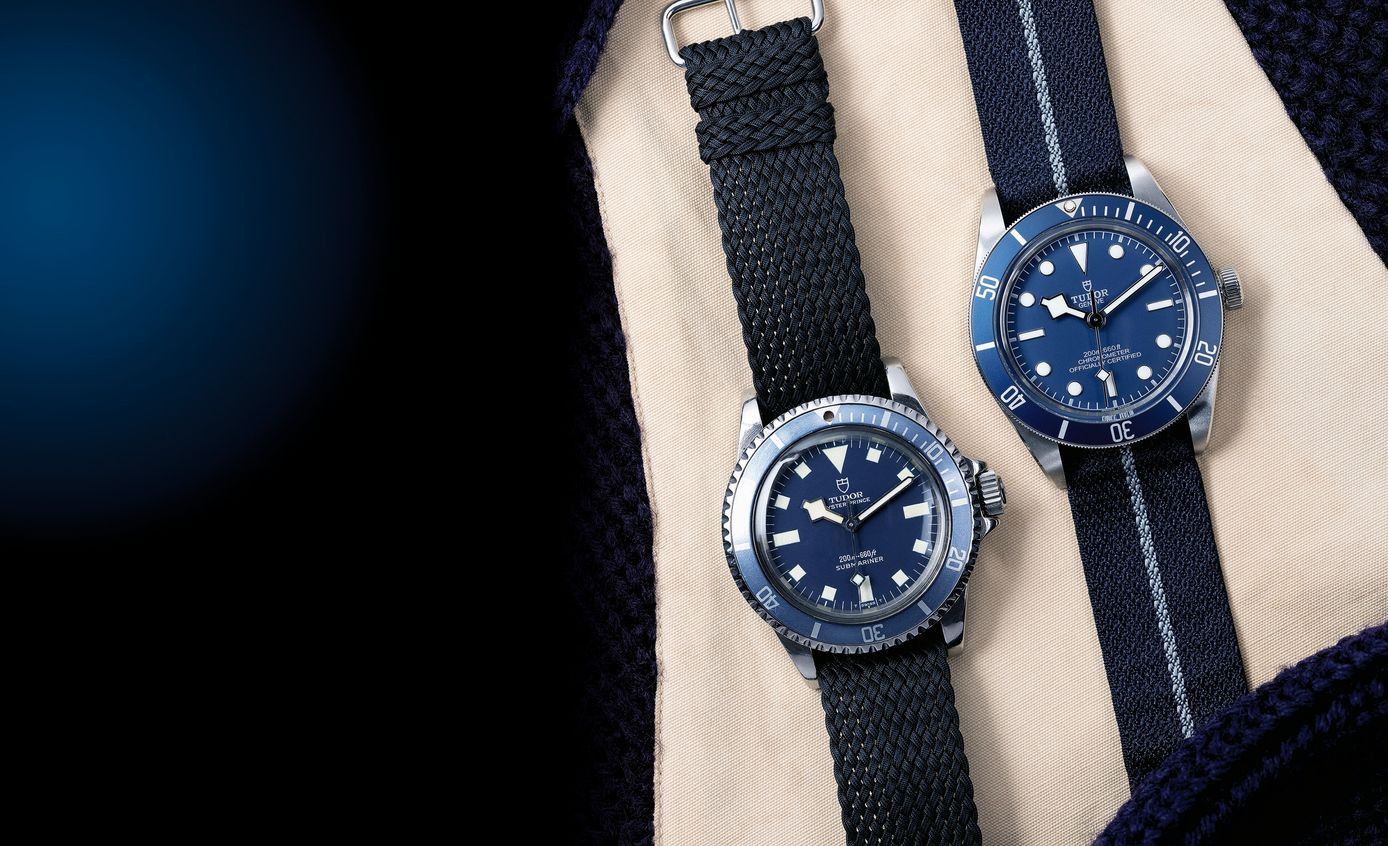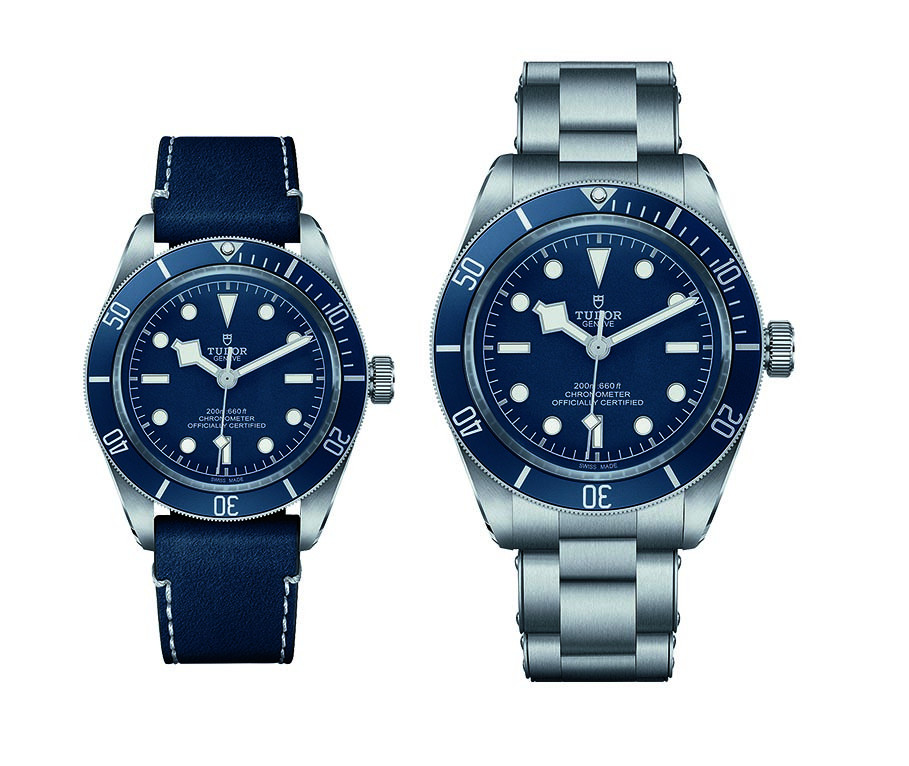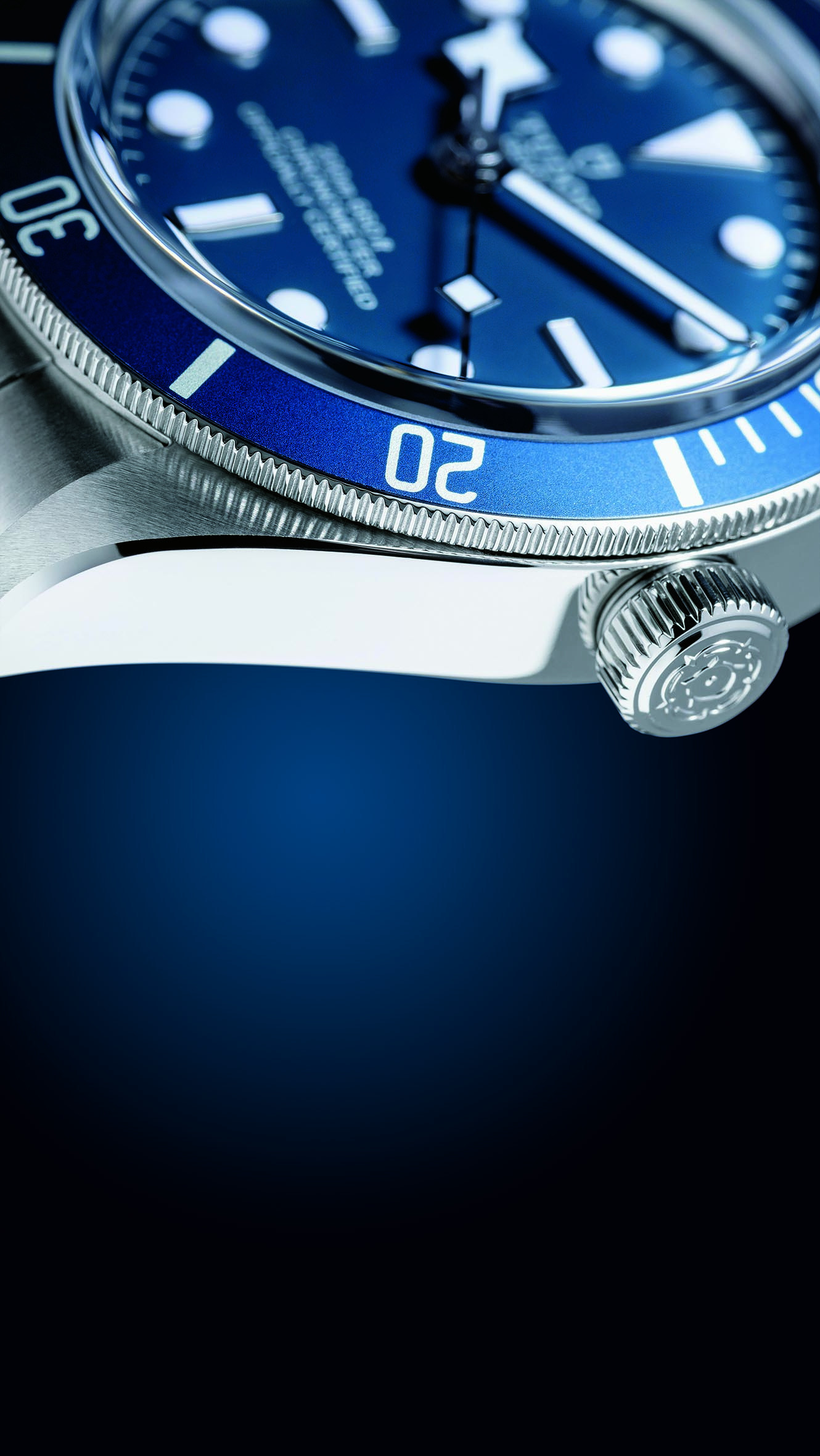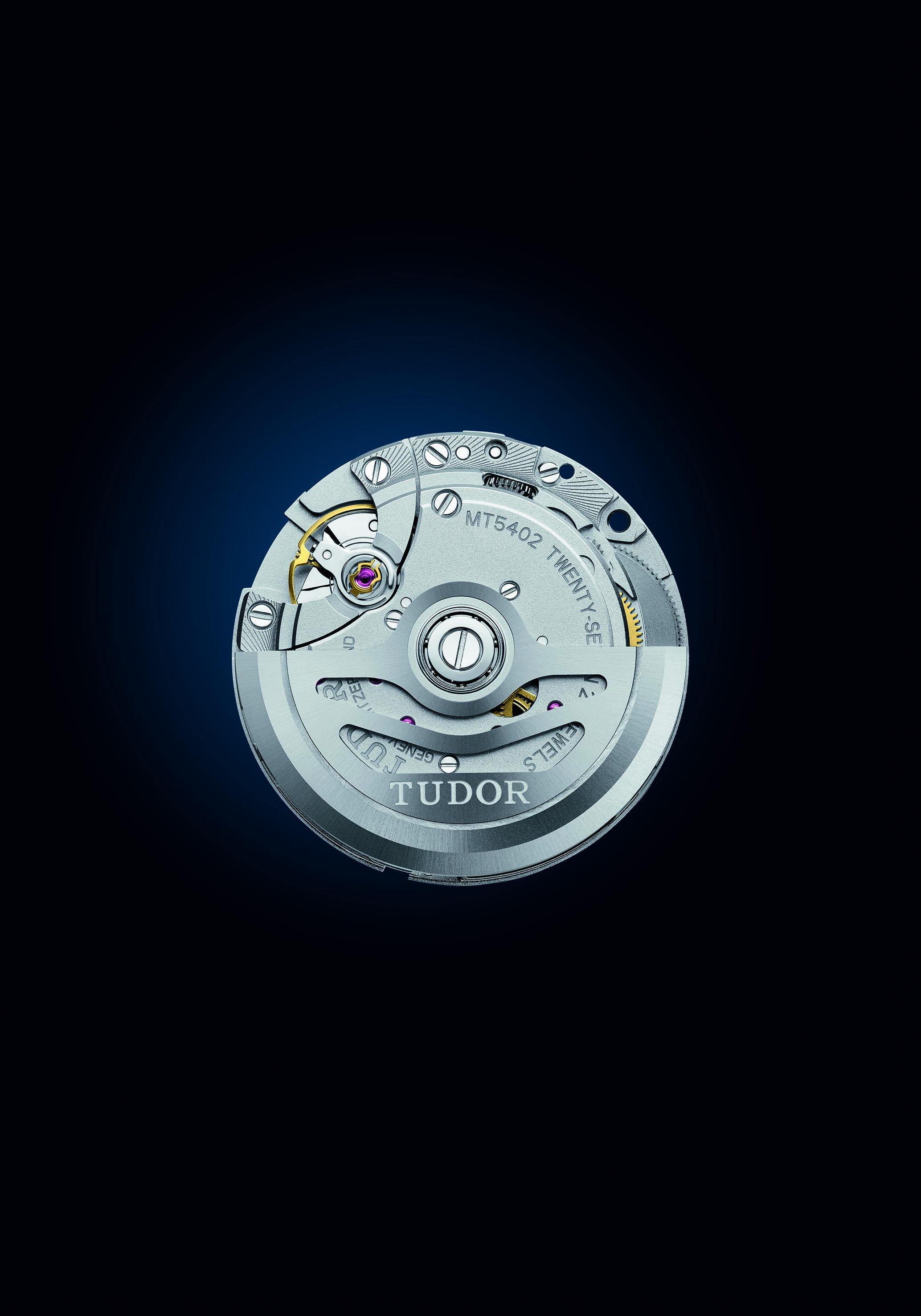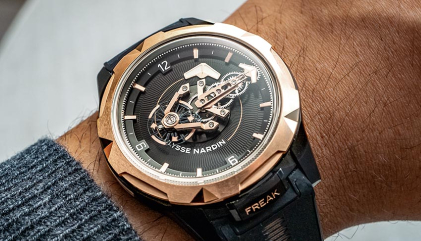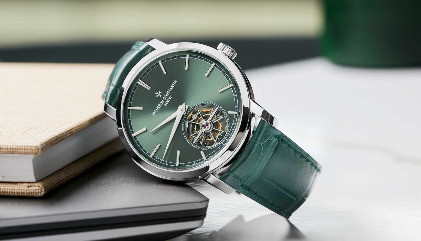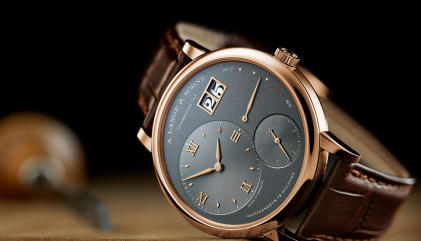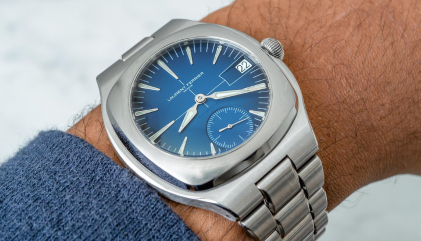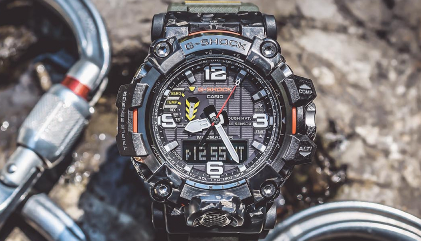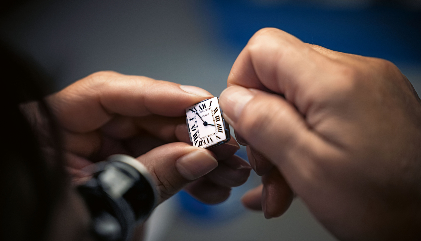The name ‘Fifty-Eight’ refers to 1958, the year in which Tudor introduced its first divers’ watch, Reference 7924, known as the ‘Big Crown.’ The new Tudor dive watch's diameter of 39 mm corresponds to the dimensions of the case of the historical model. In other respects, too, this new version, at first glance, actually looks like a vintage watch, an antique model. It even looks somewhat delicate, thanks to the rotating bezel and the smaller dial.
The vintage impression is further underscored by the domed scratch-resistant sapphire crystal, which is highly curved along its rim like the acrylic crystals of models from previous decades. The dial, too, is slightly convex like the faces of classic antique watches. The narrow strap lugs and the typography on the rotatable bezel also allude to Tudor’s history. The designers even opted to omit a date display, thus completing the historical impression.
Old Tudor dive watches with so-called ‘snowflake’ hands have become famous and are eagerly sought after at auctions. The nickname derives from the squares at the tips of the hour hand and seconds hand: Each is rotated 45 degrees and somewhat resembles a stylised snowflake. This detail first appeared on the tips of the hands toward the end of the 1960s and was retained thereafter. In 1956, French naval divers turned to Tudor to find the ideal divers’ watch for their purposes. Tudor subsequently became the official supplier to French military frogmen. The combat divers opted for blue rather than black dials in the mid-1970s. Our test watch with blue dial and blue aluminum dive-time scale recalls these timepieces. The aluminum scale is not as scratch resistant as its ceramic counterparts, but its matte surface goes better with this model’s vintage styling.
All in all, Tudor has succeeded in creating a very handsome and harmonious retro watch that looks even more timeless thanks to its blue colour and the fact that it forgoes the golden hands and hour indexes that are usually installed on the dials of other Fifty-Eight models. Fortunately, functionality was not allowed to fall by the wayside: Large luminous indexes and plenty of luminous material on the hands guarantee outstanding legibility by day and by night. The easily grasped crown decouples from the winding mechanism when screwed shut, thus protecting the latter. The time is easy to set thanks to the stop-seconds function and the absence of a date display, which accordingly eliminates the crown’s first extracted position.
The unidirectional rotatable bezel clicks into place in single-minute increments. It, too, is easy to grasp and to turn thanks to its finely serrated rim. The bezels of early models had some play and sounded tinny when they clicked into place, but Tudor has made significant improvements: This watch’s bezel clicks almost as authoritatively into place as do its counterparts on watches made by Tudor’s big sister, Rolex. A luminous triangular index enables the wearer to read the dive time even in dark conditions or murky water. This Black Bay is also fully suitable for diving thanks to its case, which is water resistant to 200 metres, and its water-resistant textile strap.
The Tudor dive watch’s blue fabric strap is lightweight and durable and has a grey stripe along its midline. It is sewn using a traditional method that relies on historical machines. The handsome pin buckle is styled to resemble the shield shape of Tudor’s coat-of-arms logo. Like the case, the clasp juxtaposes polished and satin-finished surfaces.
The textile strap is permeable to air, which contributes to its comfort on the wrist. Flat textile straps often look out of place on watches with tall cases, but that is not an issue here: The strap suits the Black Bay well and enhances its overall vintage appearance.
The strap runs across the back of the case and therefore largely covers it, but that’s not a problem here because, unfortunately, this Tudor dive watch doesn’t have a glass back, so manufacture Calibre MT5402 won’t be seen by the buyer and can only be admired by the watchmaker who unscrews the fully threaded steel back and opens the case for maintenance or repairs. The movement is particularly impressive because it upholds Tudor’s traditional virtues of precision and robustness. The brand fulfills the former claim by having each movement tested by the official Swiss chronometer-testing authority, COSC. This exam certifies, among other criteria, that the average daily rate deviation remains in a narrow range between –4 and +6 seconds.
Our electronic timing machine confirmed this accuracy. Deviations in the various positions remained in a tight cluster. The average deviation was a minor loss of –1.3 seconds per day. The watch kept nearly perfect time on the wrist, where we measured a minimal gain of just +0.5 seconds per day.
Calibre MT5402 (the MT stands for ‘Movement Tudor’) relies on various technical features to fulfill the second part of the brand’s philosophy: Robustness. First, the movement is quite tall (4.99 mm), so any small tolerance fluctuations in the production process will be unlikely to result in malfunctions. Second, the balance is not held on only one side by a cock but is installed in a stable and completely horizontal position under a bridge. And third, the hairspring is made of silicon, thus minimising the likelihood of rate deviations caused by decentering or deformation of this tiny spring after the movement has suffered an impact.
Further high-quality features of the manufacture movement are its long power reserve of 70 hours and its freely oscillating balance with four regulating screws. These screws mean that the rate is not finely adjusted by changing the active length of the hairspring, as is the case with ETA calibres.
The fact that Tudor does not invest much effort or expense in finely decorating the movement fits with the brand’s philosophy of offering reliable watchmaking technology at an affordable price. Nonetheless, the rotor is attractively openworked and adorned with both a sunburst pattern and the engraved brand name.
The Black Bay inspires with its design in much the same way as did Tudor’s historic dive watches. And like its ancestors, functionality is given equal priority. Apart from the missing date display and the scratch-sensitive aluminum bezel, you don’t have to make any compromises here. This newcomer has a scratch-resistant sapphire crystal, plenty of luminous material, high water resistance, good wearing comfort, and easy operation. The price is right, too. So Tudor has done everything right. But this success is also shown by the long waiting lists for this model. In this way, too, Tudor is following in the footsteps of its big sister, Rolex.
This story first appeared in WatchTime US, and was carried in the April-June 2021 issue of WatchTime India. To subscribe to the issue, click here





